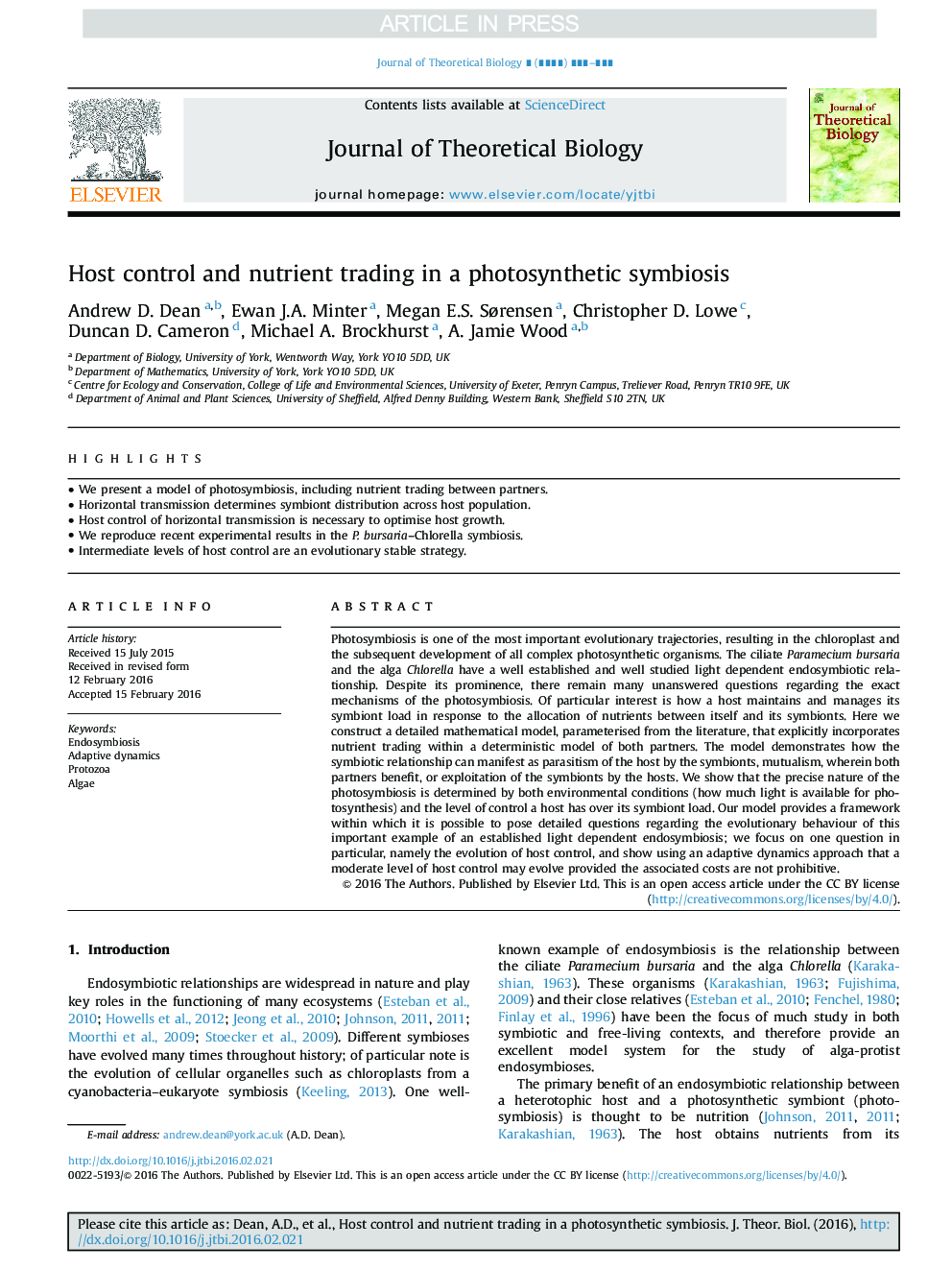| Article ID | Journal | Published Year | Pages | File Type |
|---|---|---|---|---|
| 6369119 | Journal of Theoretical Biology | 2016 | 12 Pages |
Abstract
Photosymbiosis is one of the most important evolutionary trajectories, resulting in the chloroplast and the subsequent development of all complex photosynthetic organisms. The ciliate Paramecium bursaria and the alga Chlorella have a well established and well studied light dependent endosymbiotic relationship. Despite its prominence, there remain many unanswered questions regarding the exact mechanisms of the photosymbiosis. Of particular interest is how a host maintains and manages its symbiont load in response to the allocation of nutrients between itself and its symbionts. Here we construct a detailed mathematical model, parameterised from the literature, that explicitly incorporates nutrient trading within a deterministic model of both partners. The model demonstrates how the symbiotic relationship can manifest as parasitism of the host by the symbionts, mutualism, wherein both partners benefit, or exploitation of the symbionts by the hosts. We show that the precise nature of the photosymbiosis is determined by both environmental conditions (how much light is available for photosynthesis) and the level of control a host has over its symbiont load. Our model provides a framework within which it is possible to pose detailed questions regarding the evolutionary behaviour of this important example of an established light dependent endosymbiosis; we focus on one question in particular, namely the evolution of host control, and show using an adaptive dynamics approach that a moderate level of host control may evolve provided the associated costs are not prohibitive.
Related Topics
Life Sciences
Agricultural and Biological Sciences
Agricultural and Biological Sciences (General)
Authors
Andrew D. Dean, Ewan J.A. Minter, Megan E.S. Sørensen, Christopher D. Lowe, Duncan D. Cameron, Michael A. Brockhurst, A. Jamie Wood,
